[NOTE: Some displayed images are automatically cropped. Click or tap any photo (above the caption) to see it in full screen.
I roll into Monachil, a small, valley town exurb of Granada on schedule on Tuesday evening. My host is Nika, Chicago-born but raised in a Slavic family, now living in Spain. The heart of Monachil consists of narrow streets perched on steep slopes above a small river.
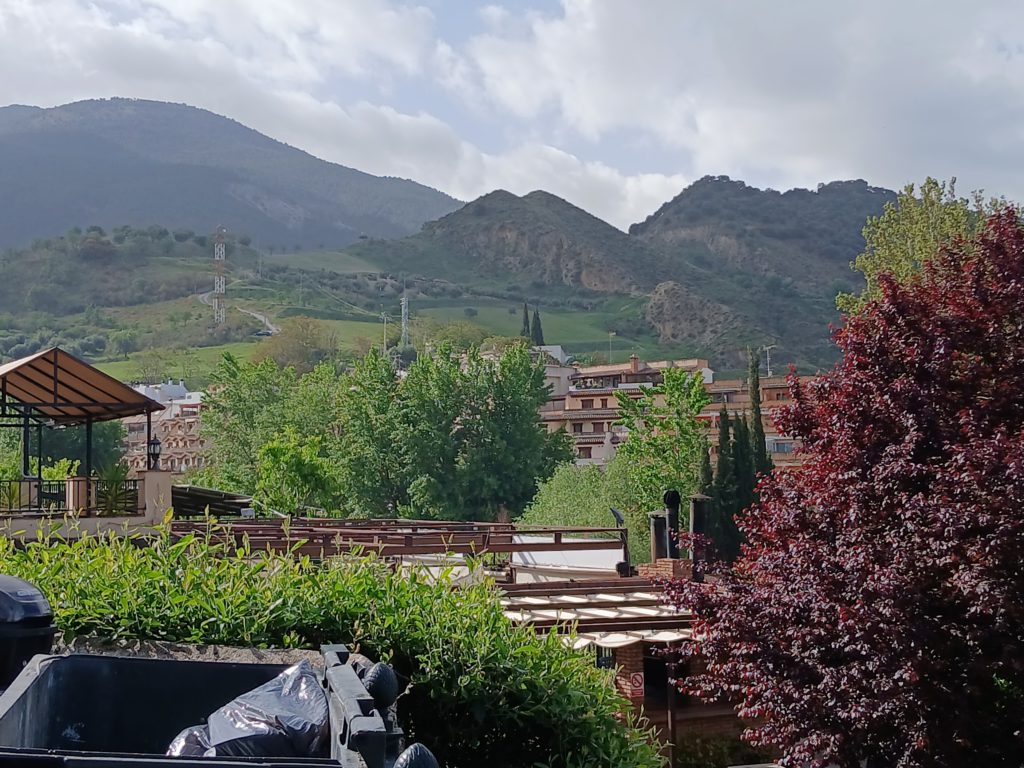
Nika’s house is on one of these streets and I’m extremely lucky to find a legal parking spot within 200 feet of her door.
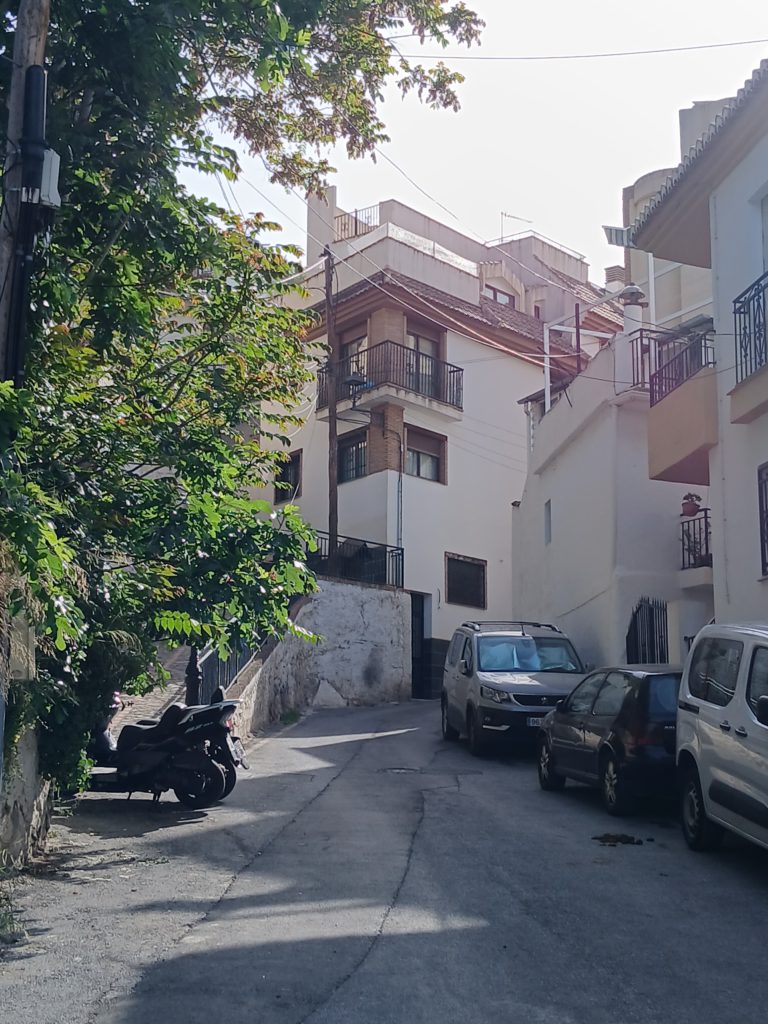
As is often the case with weekday visits, Nika has warned me she’ll be quite busy and that I’ll be on my own quite a bit.
When her remote work is finished, we have dinner and start to get acquainted. Despite her U.S. origins, between her ethnic family and long absence as an adult, she says she doesn’t feel like an “American”. Indeed, Russian was her first language and she speaks English perfectly but with an unusual, very slight accent. Currently, she’s studying to improve her Spanish and broaden her social and professional opportunities in her adopted country. After a walk through the village, we call it a night.
Wednesday morning, I hop the commuter bus into Granada, switching to the tram system, foot, and city bus to scale the heights to the Alhambra. This is one of the world’s most visited tourist attractions, a 35 acre Islamic complex whose origins date back to the 13th century. With the expulsion of the Moors in 1492, it became the property of the Spanish Crown. It’s had its ups and downs in the subsequent 500 years but is one of the most famous landmarks in Europe.
I know same day tickets are never available but when I ask one of the gatekeepers whether there’s anything for tomorrow, I’m surprised when she says the next available day is in June, at least 5 weeks away! I suspect many of the tickets are bought by or allocated to tourist agencies which means same day access is probably available at a hefty markup. At any rate, I have no intention of trying to get in today, preferring to follow several of Nika’s suggestions for other points of interest.
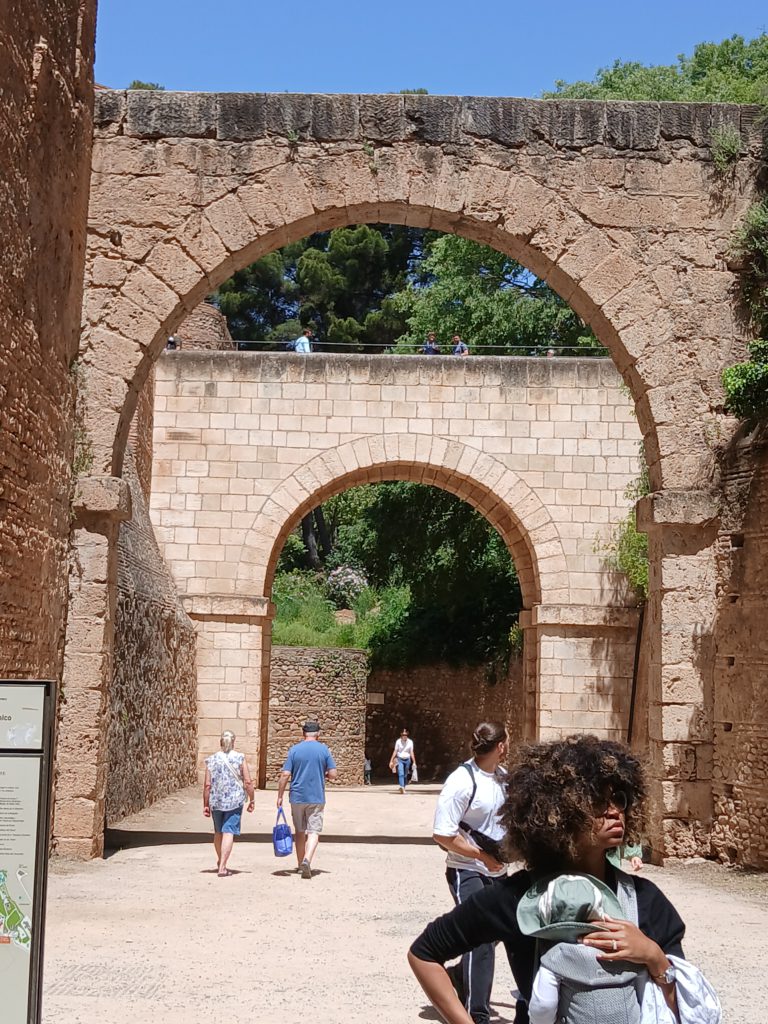
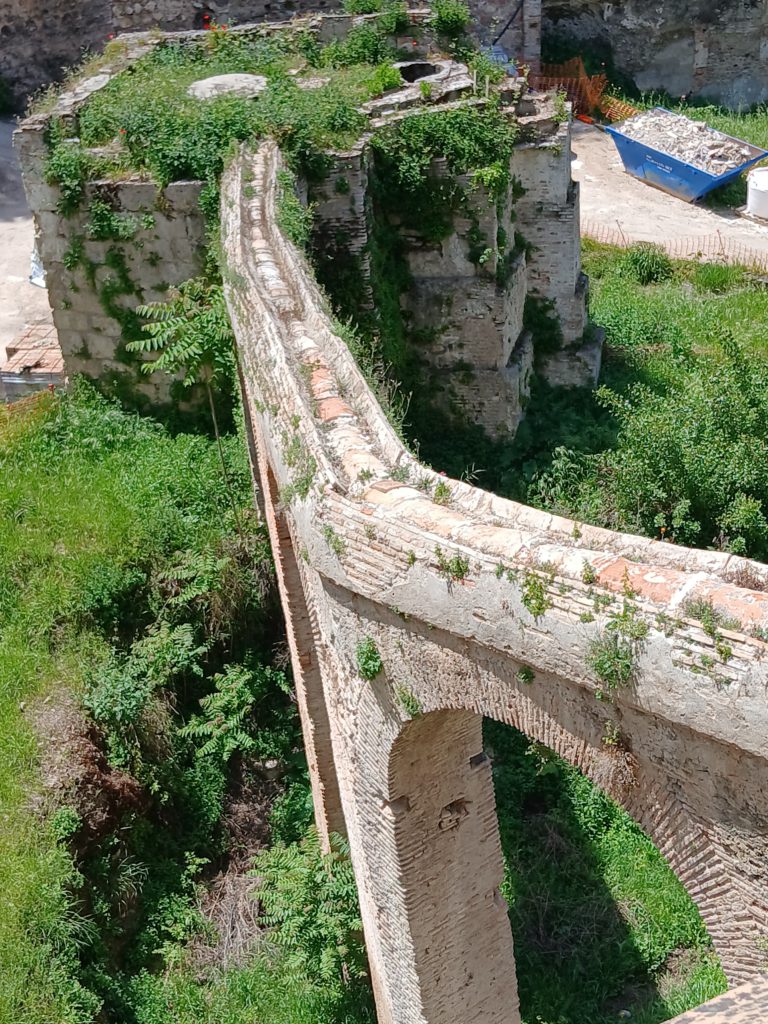
From the Alhambra, I head toward a neighborhood called Sacromonte, on a higher, adjacent hill across a substantial valley. The shade temperature is modest but, as always, walking in the sun is a real effort for me. It takes me about 30 minutes to slog up there.



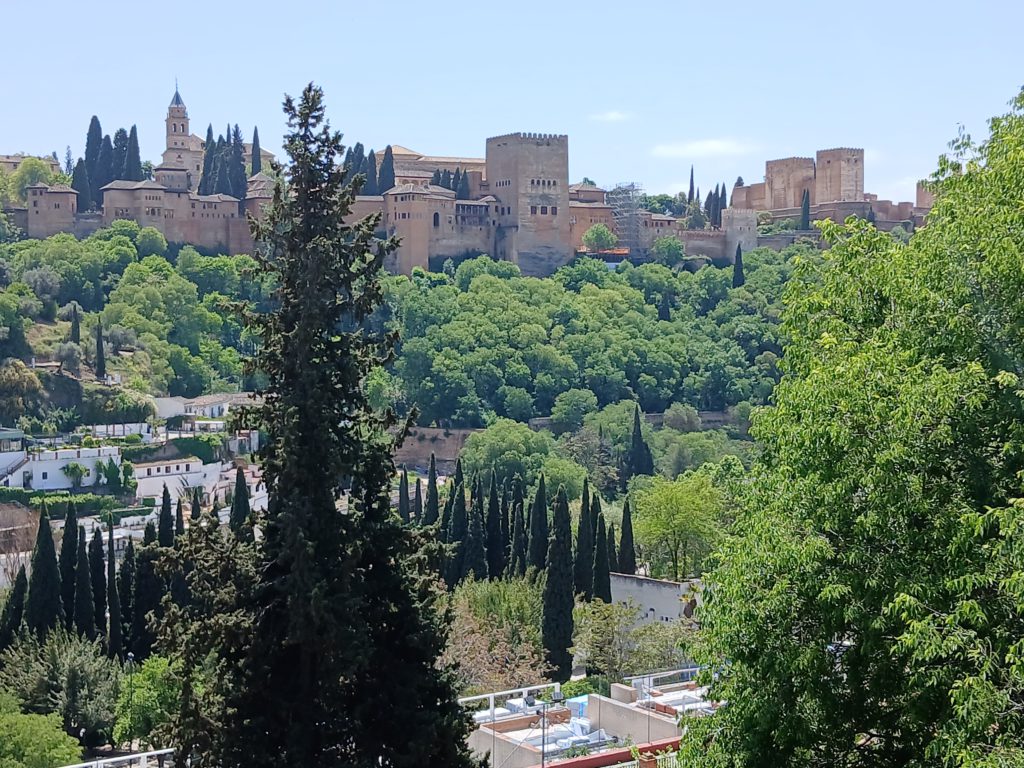

Aside from its elevation, the community is noted for having many cave houses. One of them is opened as a museum and I pay the small fee to get inside. The unit consists of about 6 rooms dug into the mountain.
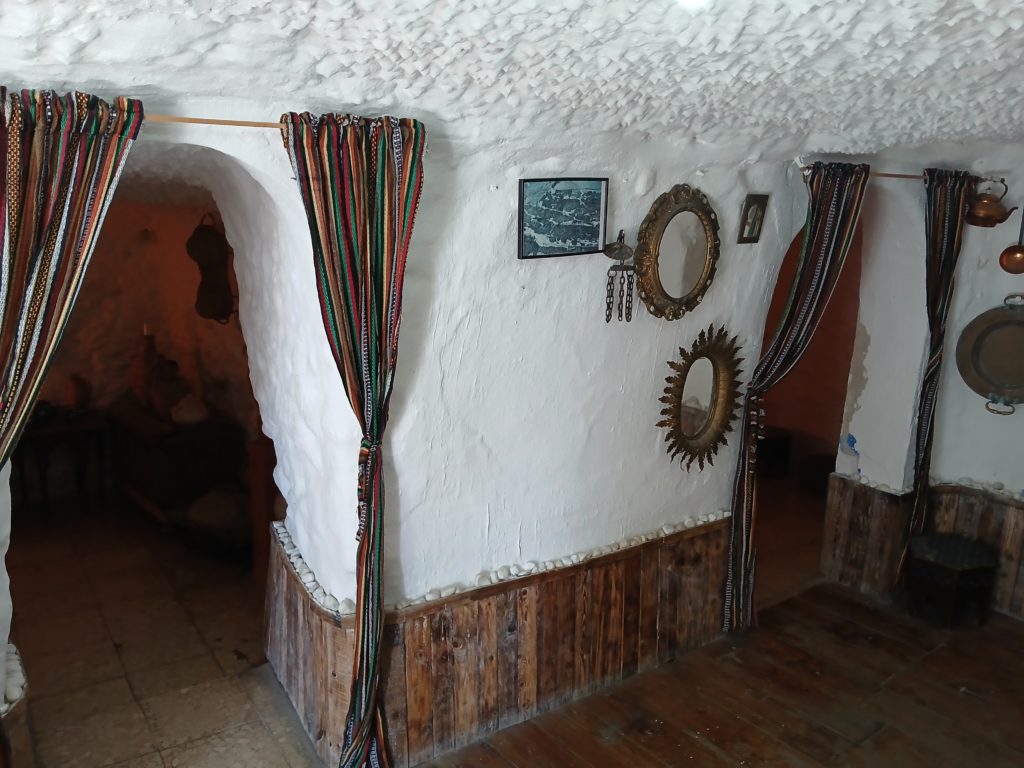
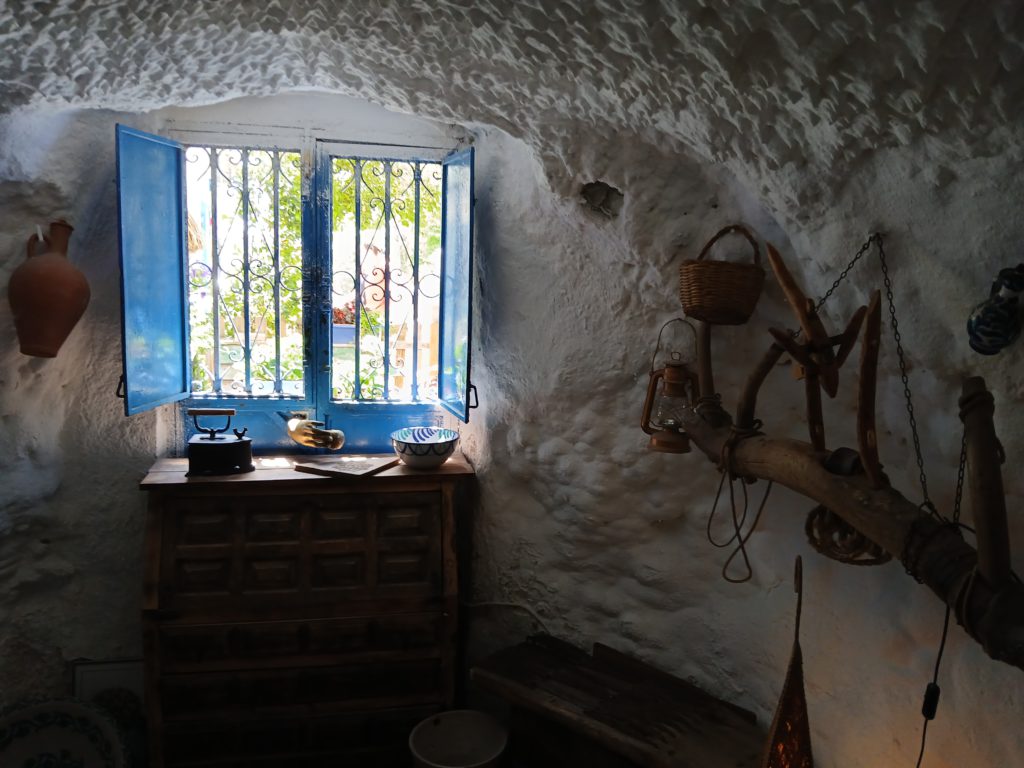


As I’m walking in this high altitude neighborhood, I see how the more conventional tourists are getting there — electric bikes and Segway tours. Bunch of candy asses [grin].
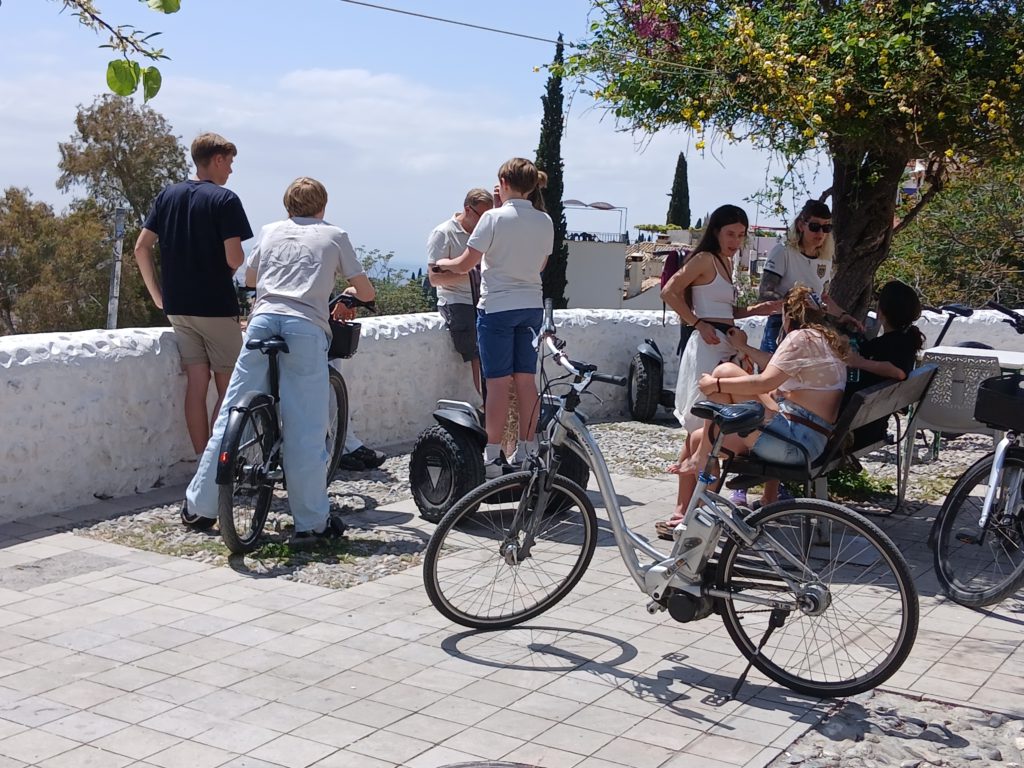
As I’m about to descend, I encounter a public water fountain. I’m really thirsty by now so I take a big drink, hoping (correctly, it turns out) the water is safe and potable.
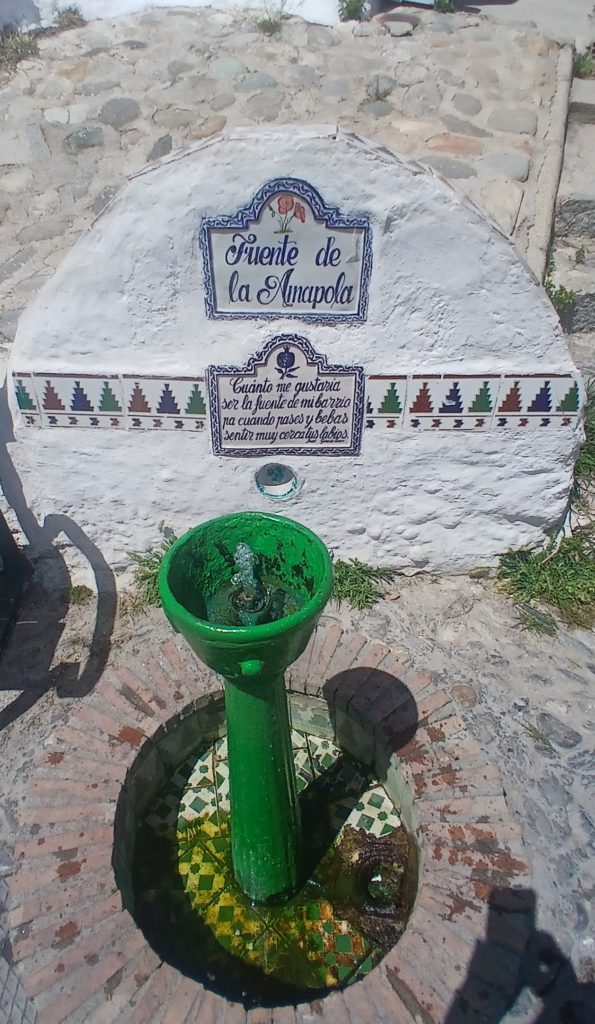
Spain has many public fountains and they’re generally sanitary unless posted otherwise. I descend via steep alleys and stairways to a mid-level neighborhood and stop at the touristy scenic viewpoint, Mirador de San Nicolás. The view here isn’t any better than other elevated points in town, but the plaza attracts buskers performing music, flamenco dances, and other entertainment for donations. It’s quite lively.
Descending further to downtown Granada, I stop at a grocery for fluids and make my way to another plaza to sit in the shade and drink. In front of me is a large statue of 2 people. The inscription says, “Isabel the Catholic Accepting the Proposals of Columbus”, the event that made Christopher Columbus, a Genoan by birth, a Spanish admiral and led directly to his voyages of Spain’s “discovery” of North America.
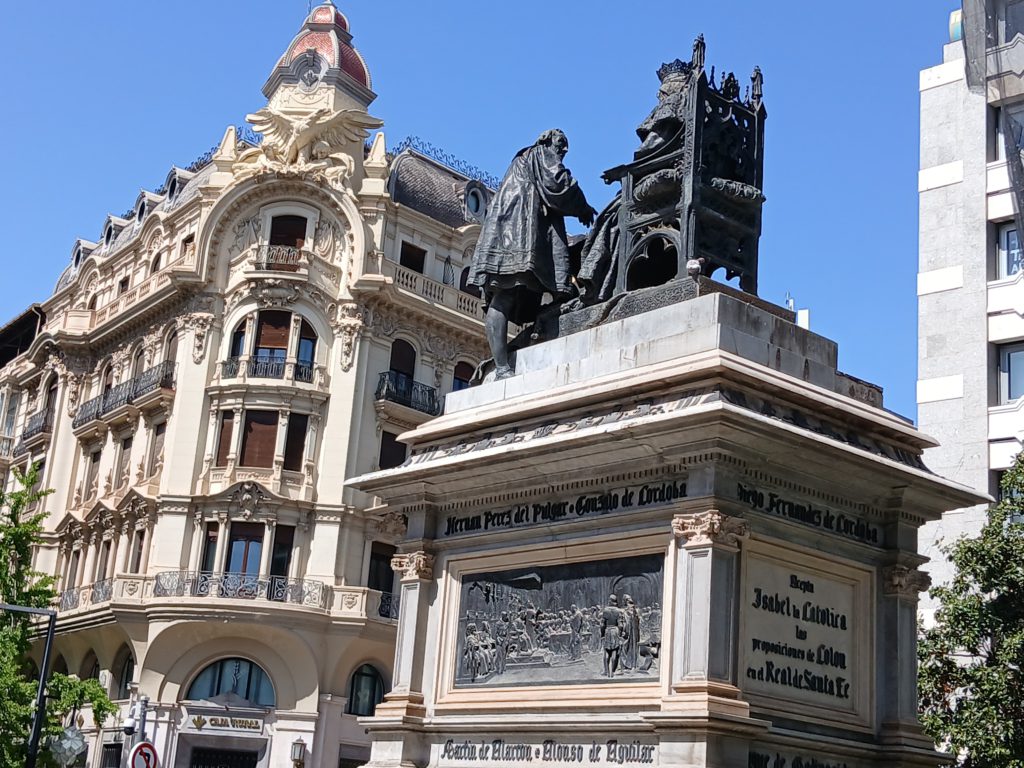
Cooled and refreshed, I work my way across town to catch a two bus connection back to Monachil. I’m back home by 6 PM and Nika and I spend the remainder of the evening talking. Thursday morning, I’m again up early and out of the guest room, because it doubles as Nika’s office. Sitting in the living room, the apartment is filled with loud, live music. As the crow flies, nothing in Monachil is very far from anything else, but due to the topography, a few hundred feet can involve a much longer, roundabout walk. I head over to the music and see that May 1 is the town’s Dia del Caballo, the Day of the Horse.
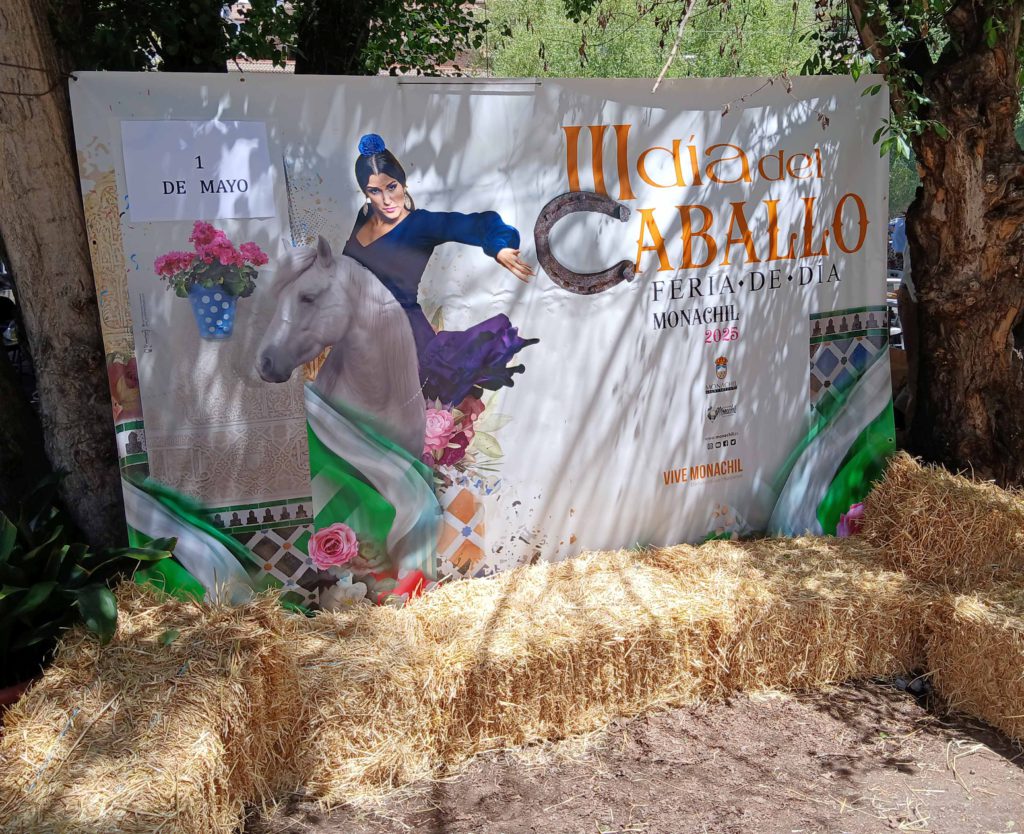
The town park has a stage set up and various local ensembles are dancing Flamenco, singing local songs, and offering various tributes. In an adjacent area, are dozens of horses and riders, along with horse drawn wagons containing families.
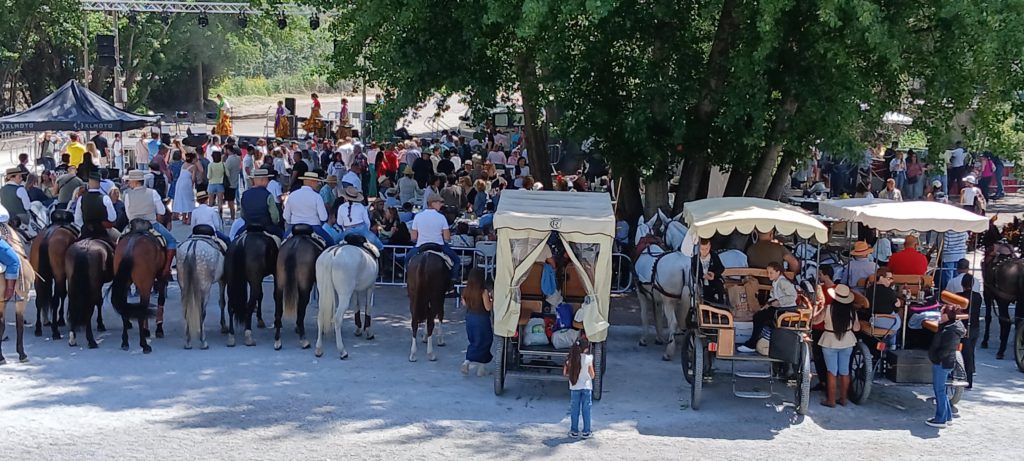
I don’t know where the horse culture comes from, but at least today it’s very strong. In one area, several people are preparing an enormous amount of rice, in a pan at least 12 feet across, over an open fire the same size.
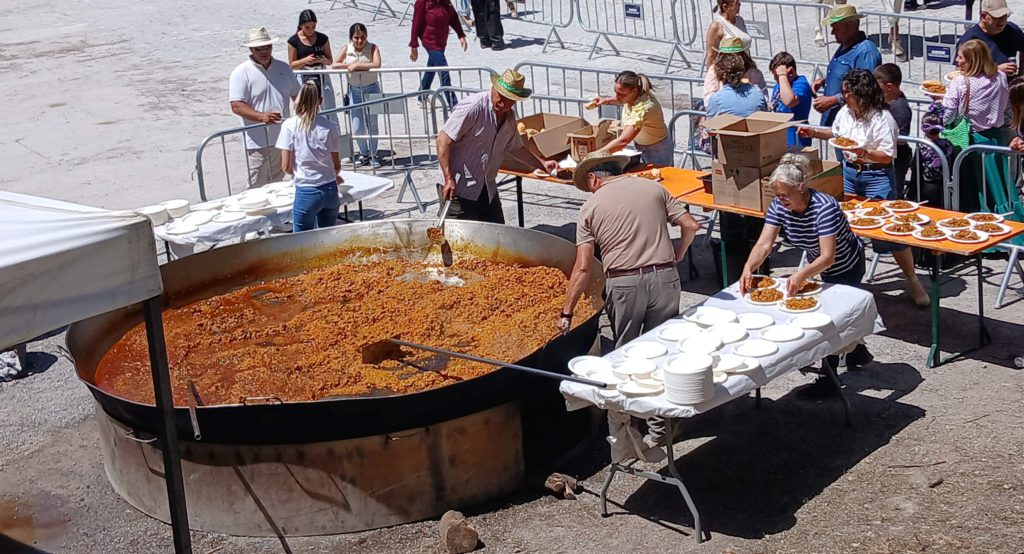
Two people are moving the rice around the pan with long handled wooden paddles. It’s still very liquid, but signs promise a plate of rice for 3 Euros, so I buy my ticket and take in the action and entertainment, waiting for the 3 PM serving time. The line forms about 30 minutes early and it’s a bit of a hardship for me to queue up in the sun for that long, but I survive. Eventually, I receive my heaping plate of delicious flavored rice along with a piece of fresh bread. Every chair in the place has been staked out by families, so I go over to a small curb and sit in the shade, balancing my plate precariously on my knees.
A while later, I walk back to the house to find Nika gone. A text from her clarifies that she arrived at the food line shortly after I left. A little later, she returns home and tells me there will be a horse show in a few hours and we agree to go back for that. As show time approaches, we walk back down to the park together and rendezvous with two Italian friends also living in Monachil. I have to admit, I’ve always been a hiker and never a horse person. After a couple of short trail rides decades ago, my question has always been, “Why ride somewhere when you can walk instead?” I recognize, though, the deep bond many people have with horses, including a number of my close friends. And the fundamental role of the horse as a pre-petroleum power source and as a cultural partner can’t be denied.
I don’t know the details of the role horses have played in Andalucia, but today demonstrates that it still holds sway. The horses and riders are respected and culturally significant. The show begins, incongruously with a fashion show — women in traditional costumes strutting across the arena to applause.

Then come costumed riders and horses. The crowd is impressed. The show progresses into horse and rider demonstrations. Horses “dance” with intricate side steps, they rear up and walk on their hind legs, and groups of riders execute coordinated, choreographed parades around the arena. The onlookers are appreciative even though many of them obviously have no more daily contact with horses than I do.
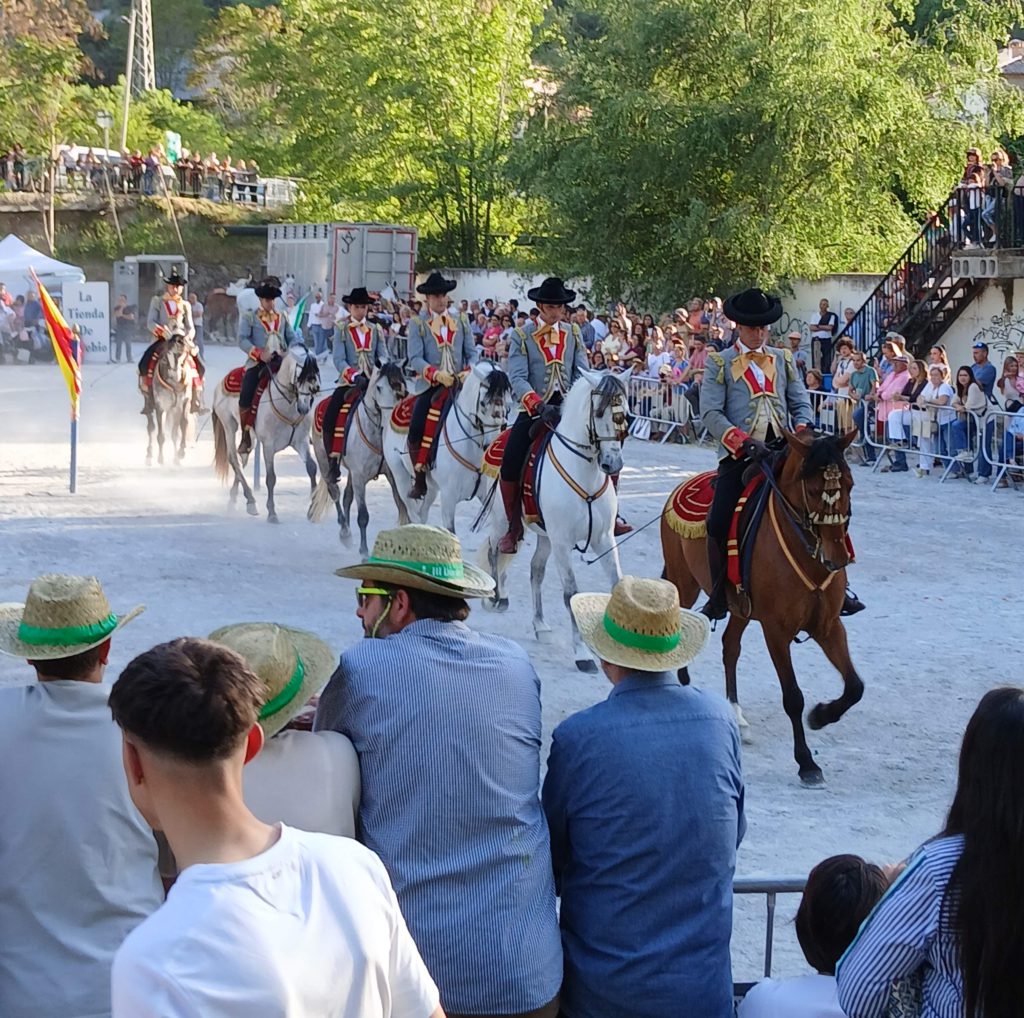
After an hour or so, the show ends and the four of us proceed to a bar in the town to participate in an informal Spanish language practice group. The crew around our table grows to about 8, including two Finnish expatriates who are absolutely the worst possible examples of Finns who consider their nation the happiest on earth. To my surprise, they have nothing nice to say about their country and have no intention of forsaking Spain to move back there. Katja and Tero are both very nice people, but they’ll never land jobs with the Finnish tourist bureau! In fact, they urge me not to visit because there is nothing of interest there — advice I intend to ignore.
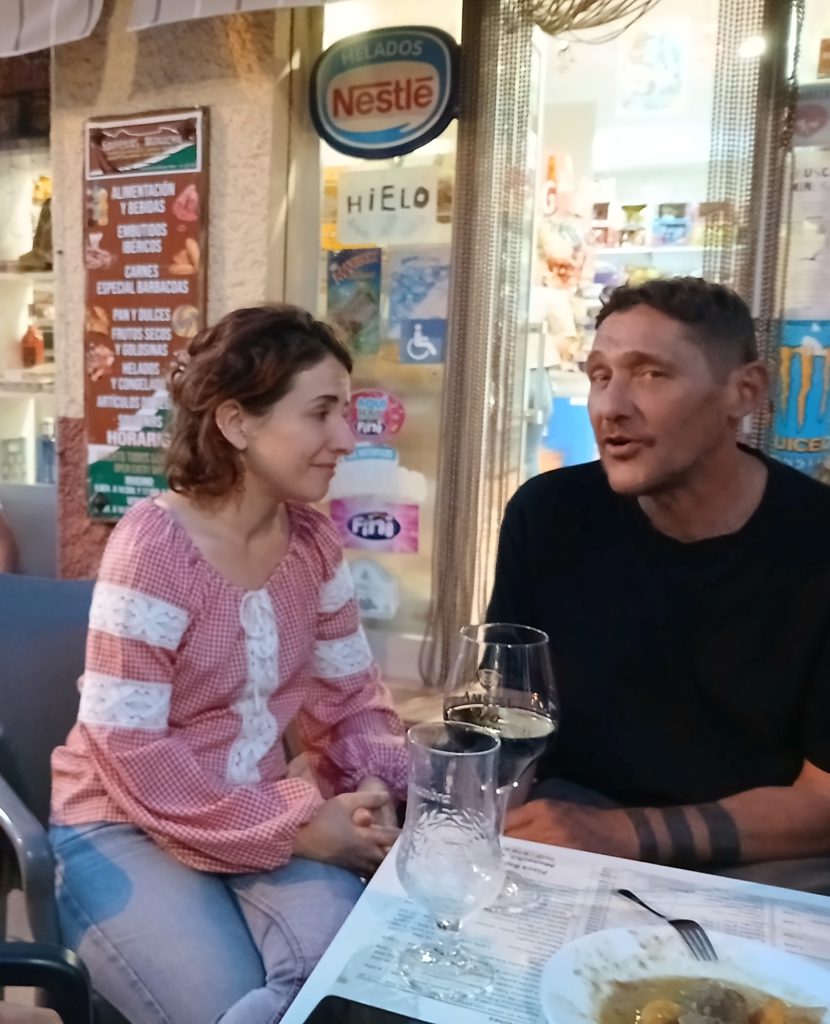
By about 10 PM, the group’s cafe bill has been paid and Nika and I peel off back to her nearby apartment. She heads to bed and shortly I decide to do the same. In the morning, I’m moving north and save Nika some transit time by taking her to one short, out of the way appointment and then dropping her in Granada for another. Before noon, I’m driving north in the direction of Madrid, but I’ve booked a night in the town of Mancha Real, my first hotel stay of the trip.
I’ve sent them a message that I’ll arrive between 2 and 3 PM but I haven’t accounted for Spanish siesta. Their reception desk is closed from 1 to 4 PM but they say they will have someone there for you if you advise them of your arrival time, which I have. I find a parking spot about 7 minutes away, load up my overnight items and walk to the hotel through narrow no-parking streets. The hotel is right where it should be and I trudge up to its 3rd floor entrance — to find the door to the lobby locked and everything deserted. I send a message through booking.com that I’m at the door and sit in the stone stairwell to await my welcome. Nothing happens. I try sending a WhatsApp message but the hotel phone number is not compatible. I’m definitely not happy with the service but have no choice but to sit in the silent stairs until someone appears. I end up cooling my heels for 80 minutes until the desk clerk arrives to open up. She speaks only Spanish, so rather than make an immediate fuss and, no doubt, get a complex answer I won’t fully comprehend, I check out my quarters and get comfortable. It’s a really nice little place: pleasant room, good internet, guest refrigerator in the lobby, 24-hour coffee. In that regard, I have nothing to complain about. I’m paying more than I would for a hostel dorm bed, but after a month of being hosted by wonderful people, I’m ready for a private room and no social obligations.
I spend the evening working and go to sleep relatively early. In the morning, before packing up, I write a message in Spanish complaining about yesterday’s abandonment and suggesting that it merits a discount on the room. Within minutes, the desk clerk is apologizing profusely and saying she slept through my messages yesterday — hey, it is called siesta. She says I can have the discount I’m requesting but makes it clear that it will be coming out of her own pocket. True or not — and I think it is — what kind of jerk would I be to demand it? Besides, because I tend to book rooms at the last minute, my reservation itself arrived after the 1 PM closing time. I just have to get in the habit of adjusting to the afternoon break so common in Spain. I accept her apology, pack up my stuff, and trudge back to the car to continue on to Madrid, my next stop, with a short supermarket diversion to get cold drinks for the ride.
As usual, I drive a circuitous route over secondary roads and go through Sierra de Andujar Natural Park, a long traverse through scenic hills. At one remote overlook I notice a quirky statue of a father and son dedicated to religious pilgrims.
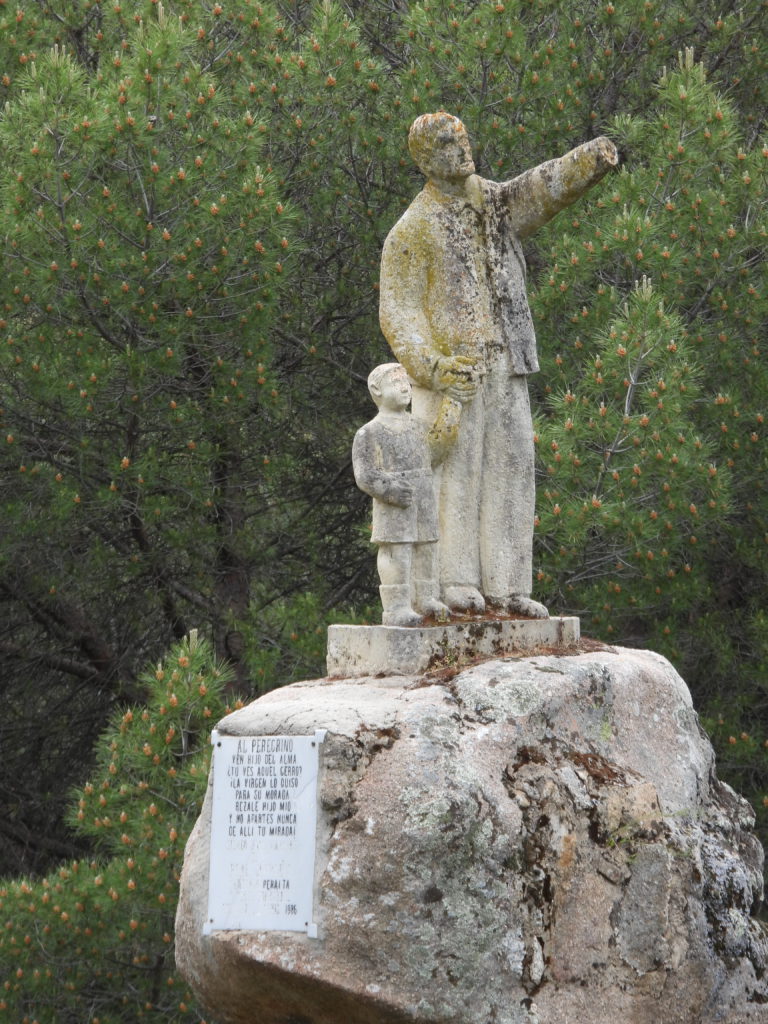
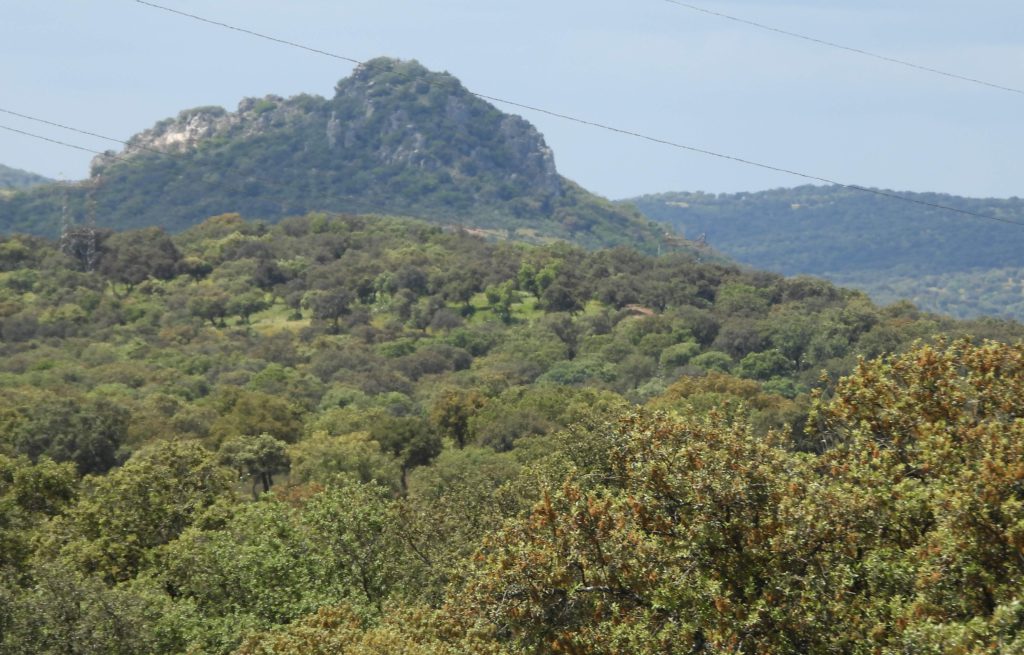
Further on, I pass a prominent church situated on a lone prominence visible for miles in every direction.
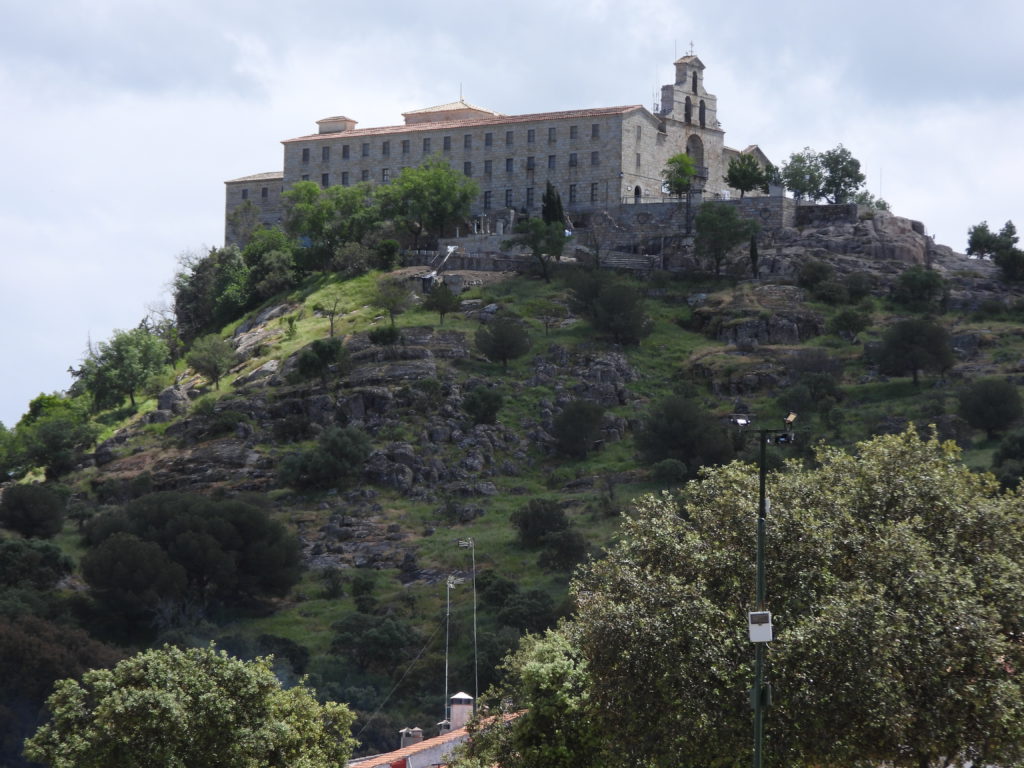
Back in flat, agricultural country, I pass through Arenas de San Juan (Sands of Saint John), a village in the La Mancha region that, for tourist purposes, claims some relation to Don Quixote, It’s sort of like Rip van Winkle references in the Catskills — a geographical relationship to a fictional character, for profit,
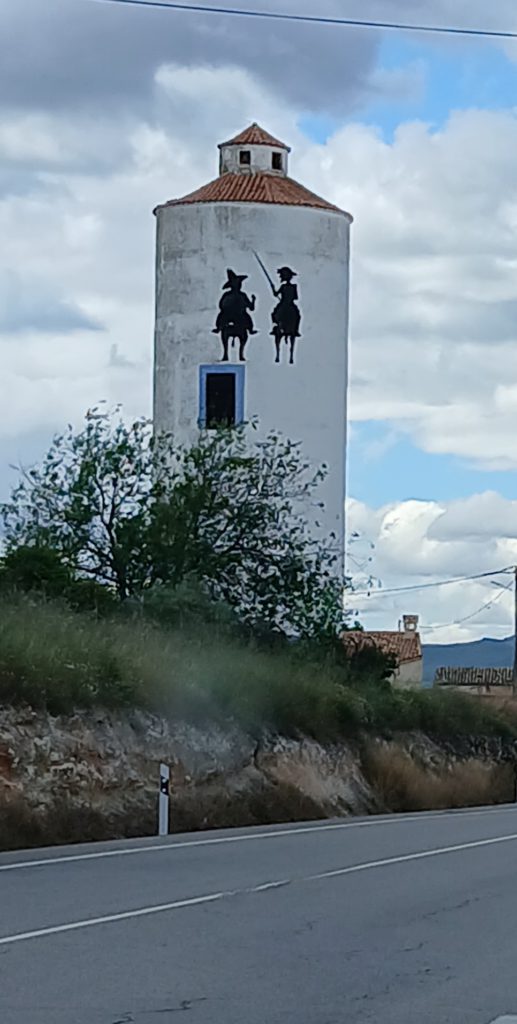
Late in the afternoon, I roll into Madrid for the first time.







